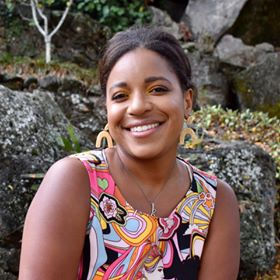Our Own Stories: Race and Representation in Aotearoa’s Arts
- BCA Admin

- Aug 6, 2020
- 4 min read

The cast of Hairspray Live! Credit: Getty Images
On 6th January, the Northern School of the Performing Arts (NSPA) announced their plans to put on a junior version of the Tony-award winning musical Hairspray for pupils aged 12 to 18.
A multi-studio arts centre, NSPA is based on the North Shore suburb of Takapuna, an affluent area with a population that is 81% Pākeha. Choosing to put on Hairspray, an acclaimed musical that famously and necessarily features a racially diverse cast, therefore, seemed an odd choice.
In late May, after a delay due to Covid-19’s impact on the performing arts, NSPA posted again about their plans to hold open auditions for the show. Immediately, Kristin Paulse, an actress, influencer, and Black Creatives Aotearoa member immediately had concerns about how the school might handle the show’s sensitive subject matter.
After Paulse enquired online about the casting of the show and whether NSPA had taken care to include a diverse range of professionals and performers to deliver the performance, a member of staff replied that there were “plenty of Māori people auditioning.” In response to questions about how NSPA plans to tell the story of racial discrimination without Black cast members, the staff member explained, “it is a junior version of the show which means a lot of those BIG issues have been cut.”

In 2016, a production in Christchurch featured Māori, Filipino and Korean actors playing the roles of African-Americans. Credit: Stuff.co.nz
The original show, based on the 1988 film of the same name, takes a bold but lighthearted approach to telling the story of the American Civil Rights movement from the perspective of socially conscious teens. The integrated cast features several Black characters who help speak to the experience of African Americans facing racism and discrimination during an often-violent fight for inclusion, racial equity, and basic freedoms.

Seaweed and Penny Pingleton from the original 1988 film
Without a guarantee that any Black performers would audition or be cast, Paulse was concerned about how the school would attempt to cut racism out of a play about the civil rights movement. She writes:
“The musical is about racism, there’s no way around it if you’re going to do the show. If you are able to recognise that there are ‘BIG issues’ in the show and feel the need for them to be cut, then my question is why are you doing the show? What are your intentions?”
Determined to get answers from NSPA, Kristin then reached out to her friend Sabby Jey, an actress and business owner of a digital marketing company, to get some traction on the issue. Jey reached out to NSPA via Instagram to request that they cast performers of colour for their production. However, once again, her critiques were met with unwarranted animosity. Paulse offered a measured and thorough explanation of why NSPA should seek to honour the message of production, to which NSPA threatened to call the police for harassment. Jey explains:
“[The school] escalated the issue, changed the narrative, and went to the police. They even contacted my [talent] agency and tried to have me fired. It’s very Amy Cooper. They are victimising themselves so that they don’t have to address the issue. They’re making it so that people of colour and their allies are afraid to speak out.”
Undeterred, Jey and Paulse reached out to NSPA staff with detailed letters and attempts to have a conversation about the matter. Ultimately, after online pushback, NSPA opted to cancel Hairspray. Before the cancellation, NSPA confirmed that only 6 castmates of colour, none of them Black, had been cast. According to NSPA’s Facebook page, they have changed course and will now put on performances of The Music Man and Beauty and the Beast. Although Jey and Paulse are relieved by NSPA’s decision to cancel the show, they have not received an apology or an acknowledgment of their hostile treatment. Ultimately, Paulse and Jey want to reiterate the purpose of their critiques. Jey says, “With everything going on – now that the whole world is listening – we are trying to make change. We must take action – civil action.”
In light of the recent waves of protests against systemic racism and police violence that continue across the United States, NSPA’s seemingly thoughtless choice to miscast a musical has become a poignant example of the microaggressions that Black and Brown New Zealanders face.
Even though New Zealand prides itself in its multiculturalism, there still seems to be a huge emotional and social dissonance between different communities and their abilities to address their deep-seated biases. Lack of representation is a form of racism.
Furthermore, this incident, while perhaps a case of good intentions gone wrong, is symptomatic of larger systemic issues of discrimination and racialised violence. From the controversial armed patrol that was piloted in predominantly Brown neighbourhoods, to pointed critiques of the National Party’s lack of Māori representatives just as Paula Bennett exits the ranks, it has become clear that Aotearoa is not immune to the racist hangover from its colonial past.
Whether onstage or in government, we need more Māori, Pasifika, and diverse New Zealand representatives who will help make sure that our lives and well-being are considered and our voices heard.
***
AUTHOR
KATHRYN KEARNEY

Kathryn Kearney is a writer, poet, and Harvard Anthropology alumna whose interests lie at the intersection of race, performance, and the arts.







Comments